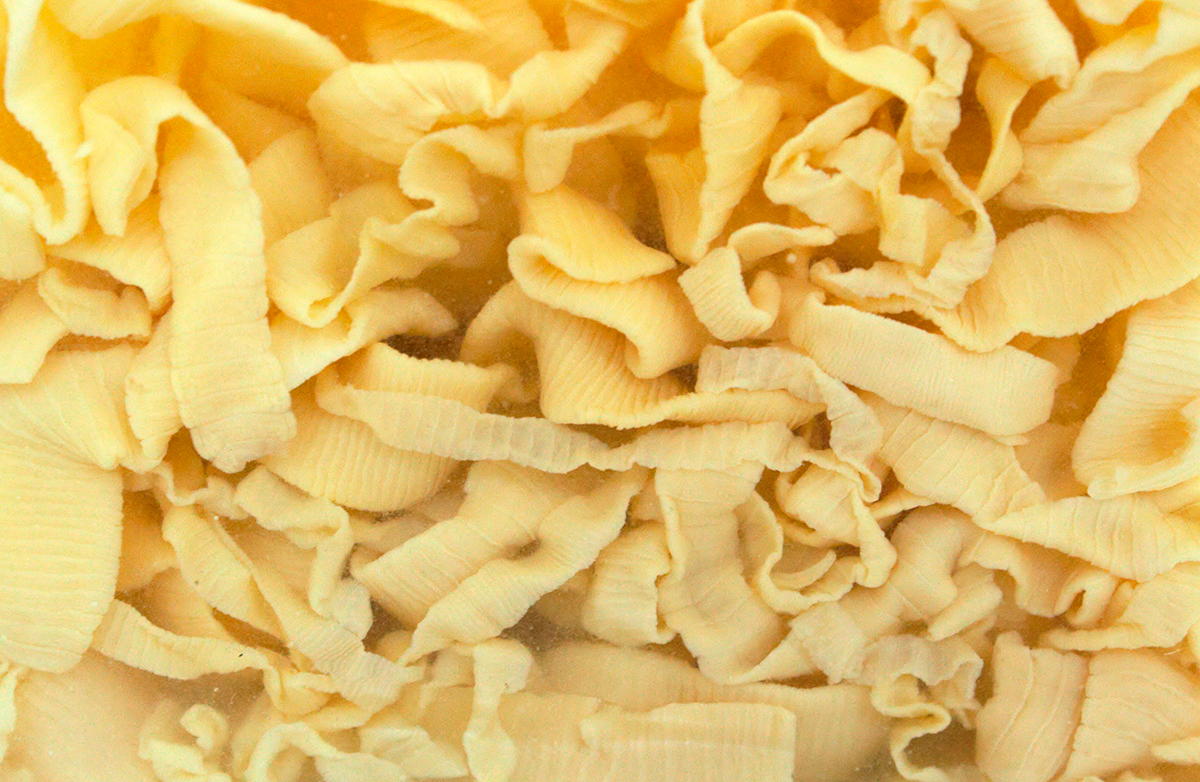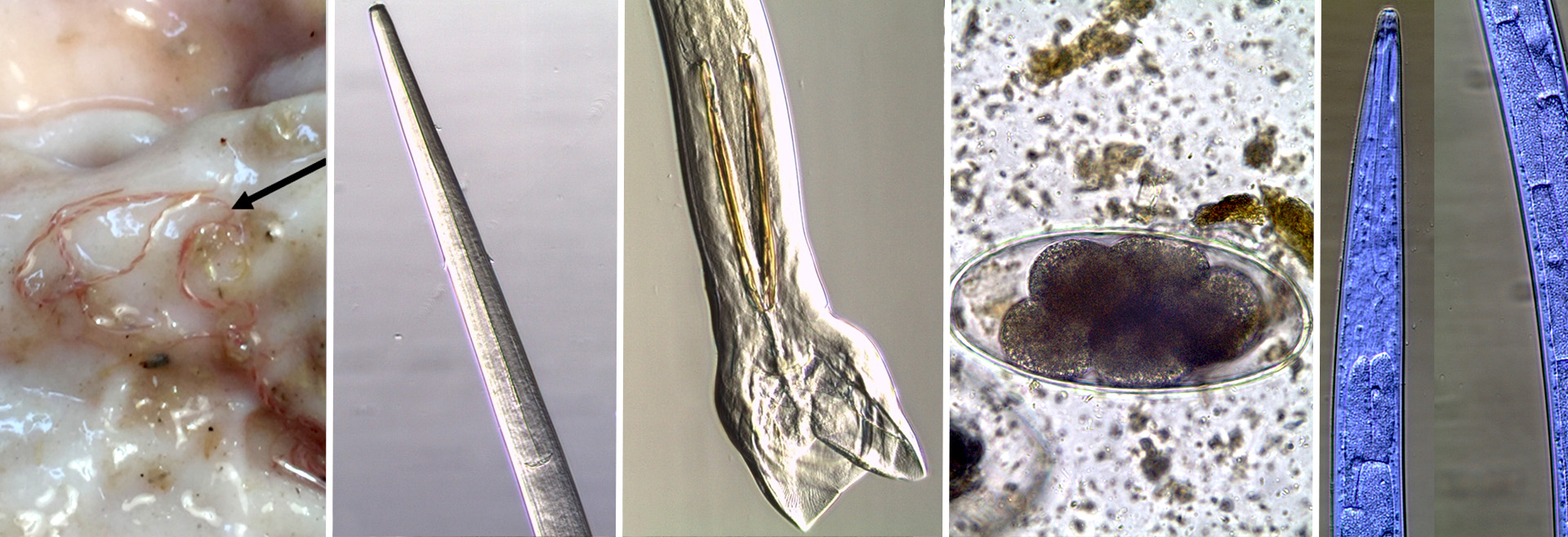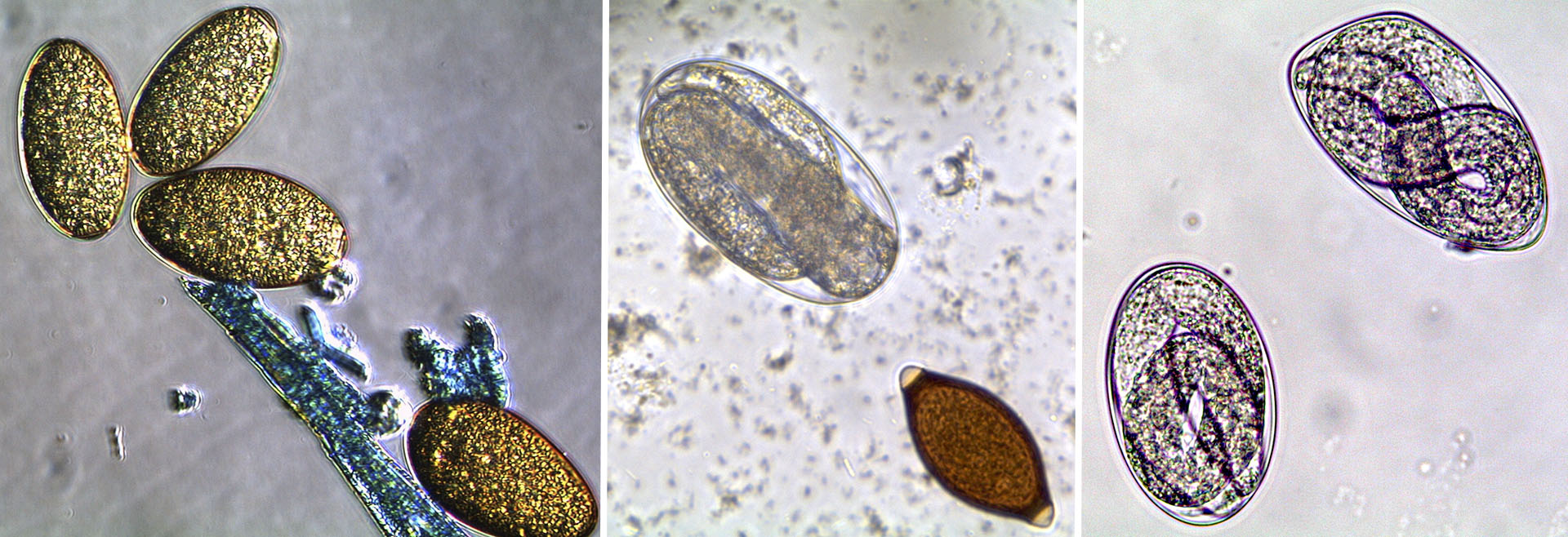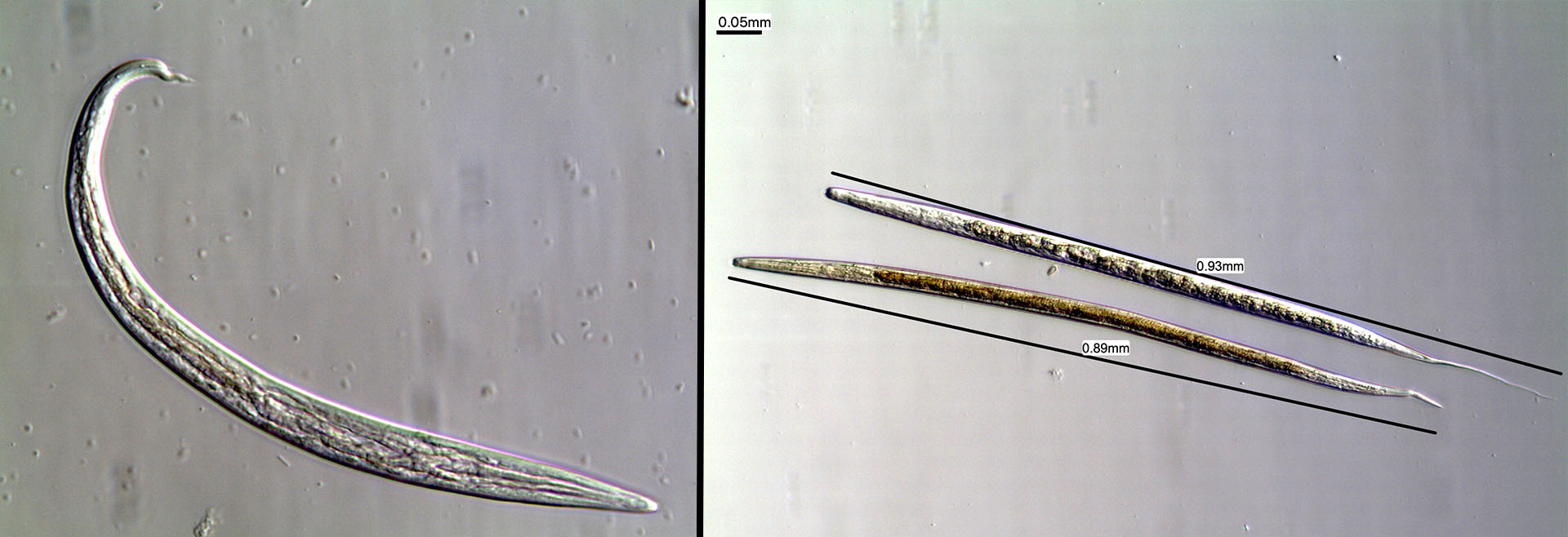
Moniezia spp. is a cestode frequently found in the small intestine of sheep.
The adult parasites can reach up to 2 m long by 1.6 cm wide. Two species, Moniezia expansa and Moniezia benedeni, occur in the small intestine of ruminants, with the former preferentially parasitizing sheep and the latter cattle.
The eggs, shed in the faeces, are variable in shape and may appear roughly square, triangular, or rounded. In the environment, the eggs are ingested by the intermediate hosts, oribatid mites, that inhabit the pastures. The cysticercoid larvae form in the mite's tissues, which are the infective form for the definitive host. Ruminants become infected by ingesting the mites together with the grass.
Moniezia infections are generally benign in adult animals and cause no clinical signs. However, they compete with the host for nutrients and their presence can negatively affect productivity. Lambs are more susceptible and massive infections can cause diarrhoea, decreased average daily gain and intestinal obstruction.
The blue bar represents the percentage of stool samples that were positive for the presence of eggs and the orange bar represents those that were negative.
The box-plot shows the results obtained in the White Merino and Black Merino sheep. The horizontal line dividing the box indicates the median value of eggs per gram of faeces (OPG) observed, the lower line the minimum value, and the upper line the maximum value. Outliers are represented by a circle.


















